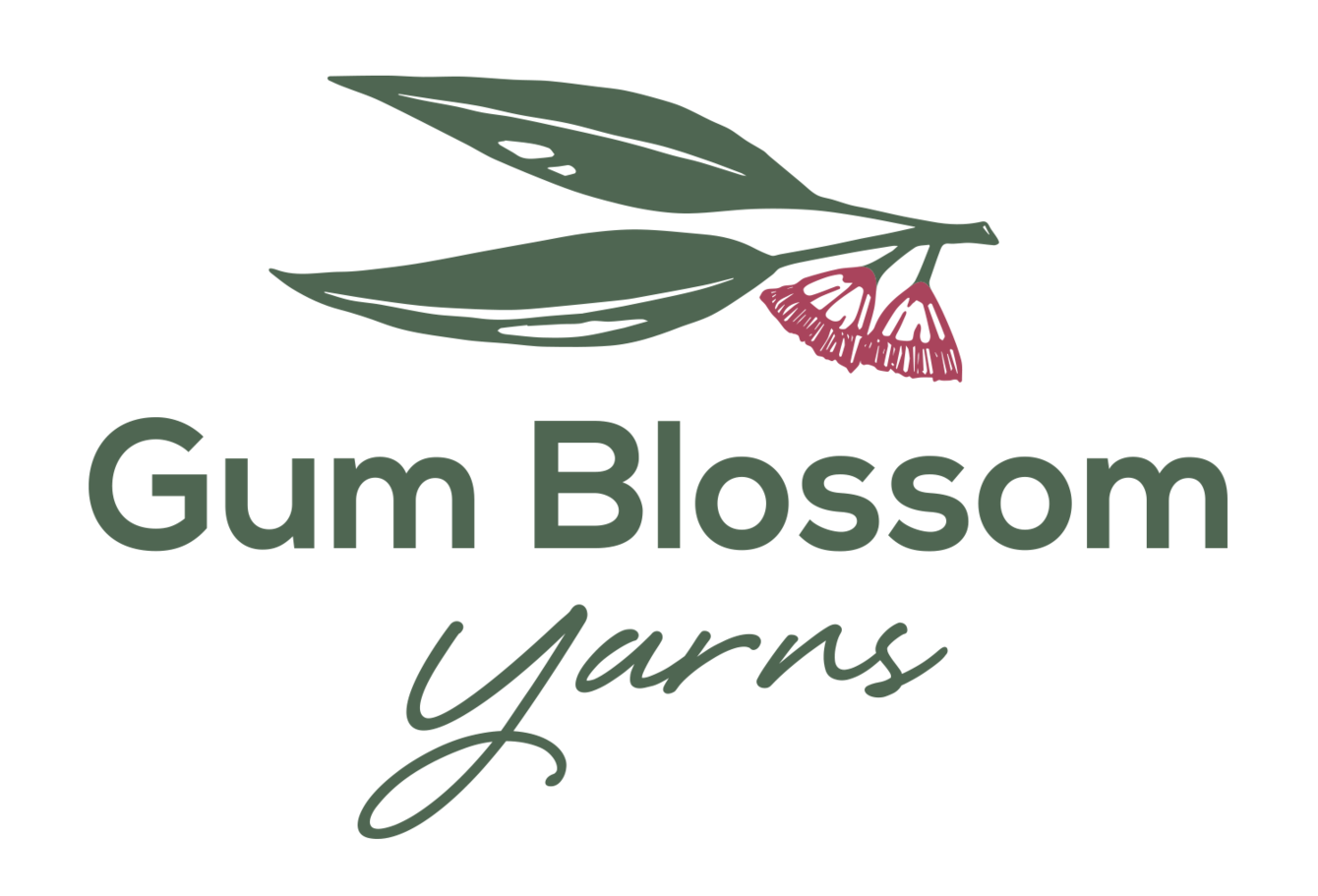Natural dyeing
It is important to me that I give you information about the process I use to source and naturally dye my yarns. These naturally dyed yarns are of the best quality Australian merino: hand-wound by Platypus Yarns.
Natural dyes may come from different parts of a plant such as the roots, bark, leaves, fruit, berries, nut or flowers. Foraged plant materials are collected, freshly crushed in water and then boiled to make a dye bath or dye pot. This dye bath is used straight away on pre-moistened yarn to retain the dye's efficacy and vibrancy.
Unlike synthetic dyes, natural dyes are non-toxic, non-polluting, environmentally friendly and do not cause any allergic reactions. On top of it all, the seasonal plant material comes from fresh fallen leaves, fallen bark, gum nuts, berries and flowers. Local sources may be weeds, cultivars or native plants either growing along roadways, in domestic gardens, creeks or public gardens.
In a dye bath, I dye 1-2 skeins of yarn in 3-4 litres of water using half to one kilogram of selected plant material. After releasing their colour, these plant materials are composted and reused.
Advantages of fresh natural dyes :
- Non-pollutant, non-allergenic, natural
- Shades produced are rich, warm & soothing
- Obtained from waste material or renewable sources
- They do not pollute the atmosphere or local environment
- Non-Toxic, biodegradable, recycled (compost)
- Use far less water and energy in the dyeing process
Plants with a high amount of tannin will dye the wool yarn without intervention; for example onion skin, avocado seed, singapore daisy and eucalyptus leaves. Yarns dyed with these plants are called "unmordanted" yarns. These yarns are completely chemical free; often present in soft natural shades.
Other plant colours will require a very small and dilute amount of a chemical bonder, called a "mordant" to bind the colour to the yarn. I use four weak mordants which are easily found in your kitchen or on a garden shelf. They are citric acid, alum (aluminium potassium sulphate), copper sulphate and iron sulphate(rusty nail). Most of these I can buy in the garden section of a hardware store or spice section of a supermarket.
Citric acid is used to preserve fruit. Alum is added to soil to 'blue' hydrangea flowers. Copper sulphate is a fertiliser and anti-fungal agent that is absorbed easily when close to the skin (e.g. when wearing a copper arthritis bracelet). Iron sulphate is a soil conditioner.
Each mordant may extract a different colour from a plant extract. Light-coloured mordanted yarns may be either unmordanted or have been pre-soaked in citric acid or alum. Blue/green yarn colours generally come from a copper sulphate mordant and "sad" dark or grey yarn colours come from iron sulphate-dipped yarn.
The process of dyeing yarn involves pre-soaking yarn, adding that yarn to a dye pot and then rinsing and restoring the yarn in wool wash. Skeins are pre-tied or balled, pre-soaked in water with or without a mordant, spun dry and then put directly into a hot dye bath (containing a pre-boiled plant extract). After some time the dye pot containing the yarn is then allowed to cool. The dyed ball or skein is removed from the dye pot, shaken to remove plant matter, rinsed and soaked for several minutes. Then the yarn is spun and hung out to dry.
I do not use commercial or synthetic dye colours, nor do I use any vinegar to "set" the colours. After dyeing yarn in the plant extract, I rinse and wash each skein in a special natural wool wash of neutral pH containing lemon myrtle and tea tree oil: which naturally repel pests and microbes.These oils are great for sensitive skin! I always allow the dyed skeins to dry in dappled sun and fresh air and hand-wind or re-skein the wool when dry. Yarn is stored in a pet, dust- and smoke-free home.
